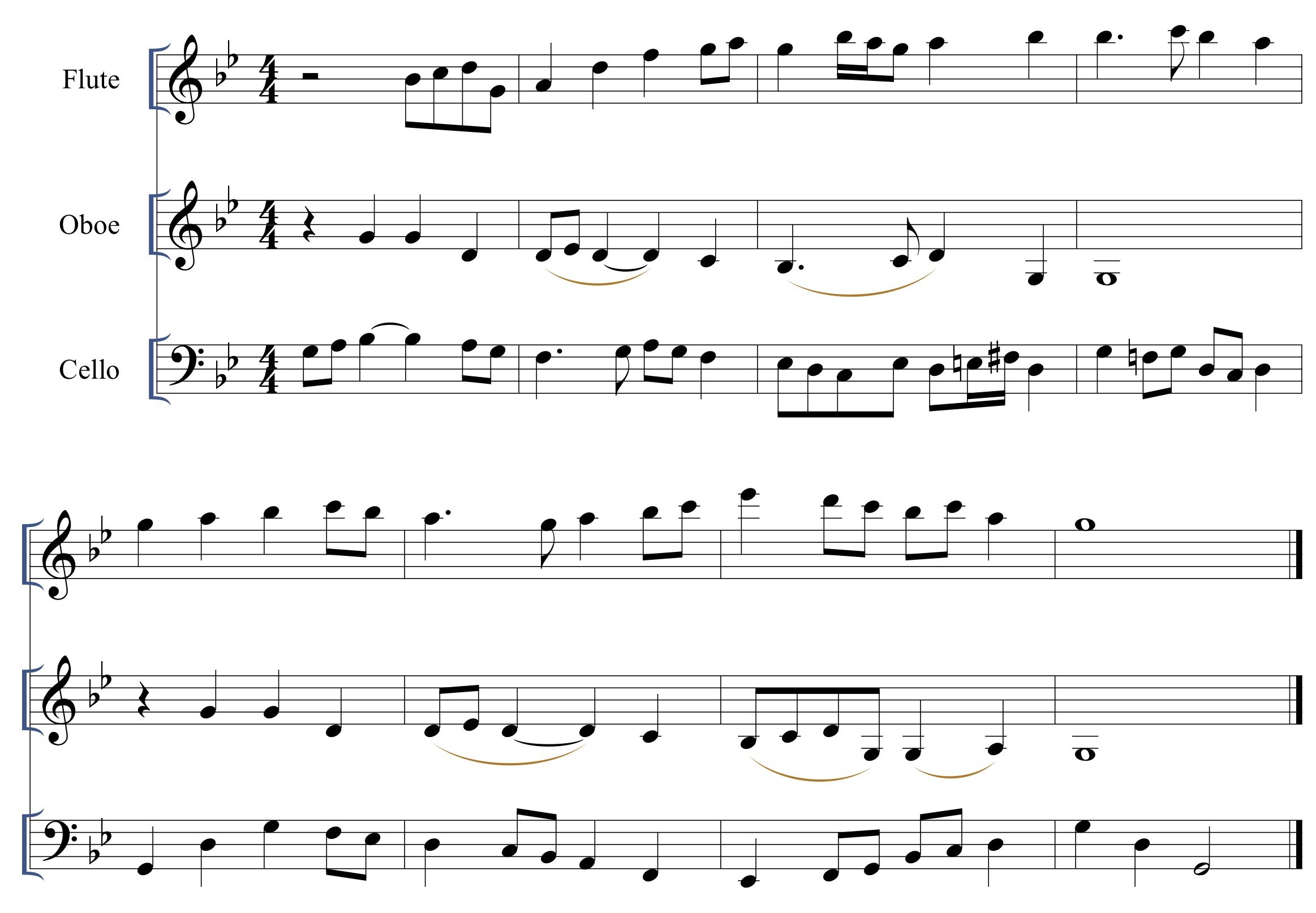

Every so often, this is referred to as a melody and accompaniment to illustrate that they aren't the same. While true homophonic texture only includes one rhythm, some folks do allow musical pieces that have varying rhythms to be described as homophonic as long as the second texture more or less follows the first melody. It should be pointed out that the homophonic texture is sometimes broadened a bit, especially in modern musical terms. This isn't to say that you won't hear other songs utilize this because you will. A lot of acapella groups utilize this type of musical texture to bring life to beautiful musical arrangements.

When it's done right, it can be a magical experience. Sometimes, this type of texture is referred to as homorhythmic since there are no other rhythms. It doesn't move against it nor does it introduce a new rhythm. A homophonic textured musical piece has an accompaniment that moves with the melody. If you're wondering what that means, that's okay. It has to be an accompaniment though and nothing else. The word means "same-sounding" or "having the same sound." When an instrument or a singer accompanies the melody, you've got a homophonic sound. Homophonic is another word with roots in ancient Greece. If a singer in the crowd starts to harmonize a bit, then it's no longer monophonic. If a band joins in, it's no longer monophonic. It's true that in that scenario people will sing in different octaves, but as long as they sing in unison, it's still monophonic. Maybe you'll hear a crowd sing "We Are the Champions" in unison at a concert, which technically is monophonic, but you won't hear an entire song that way anymore. It's more likely that you'll hear this kind of music informally. Maybe you'll hear a monophonic piece last for a few seconds in a contemporary song, but it's rare to find a completely monophonic song.

Still, that kind of music is rarely done anymore. Some composers are successful, and if you need proof, listen to Debussy's "Syrinx." Some composers today work to create wonderfully and emotionally complex pieces of this texture. Knowing all that tells you how important monophonic music was and is. Certain scriptures in the Bible suggest that music for this being was as simple as possible. In fact, early church music, like Gregorian Chant music, was written in this form. This kind of music was popular throughout Ancient Greece it was the only type of music known at the time. People in the past weren't forming large orchestras. Monophonic music is the oldest form of music in history. It'll just be the melody, pure and simple. There will be no harmony, nor will there be any sort of accompaniment to help aid or pop the melody a bit. In essence, a monophonic textured musical piece uses one line of melody. It means "one sound" or a singular sound. The word has roots in the Greek language. The first type of texture that we should go over is the simplest form: monophonic.

Texture plays a big role in music, and understanding this could help you create unforgettable musical pieces. If the musical piece has almost no instrument or feels very minimalist, then someone might say the piece is thin or very simple.Īgain, this person is talking about musical texture. Technically, this person is talking about musical texture. When this happens, someone might say the musical piece is thick or too busy. When a musical piece is busy because many instruments are being used or many singers sing in disarray it feels stuffed. They can't explain it in technical terms, nor can they use this to make a musical piece better, but people know what it is. Most people know or have an idea of what it is. You'll need multiple lessons on the subject.įirstly, there are four types of musical textures. While it may be important to get to know musical textures intimately, it's not something you'll learn in one article. If you scour through internet land, you'll find overly complicated explanations. Those complexities become vital for people within the industry, and musical texture is one of those things you should understand well enough. Normally, these complexities aren't too important for folks outside the music industry, but those who want to write or create wonderful music need a better understanding. Music is everywhere, so much so that we forget how complex it really is.


 0 kommentar(er)
0 kommentar(er)
